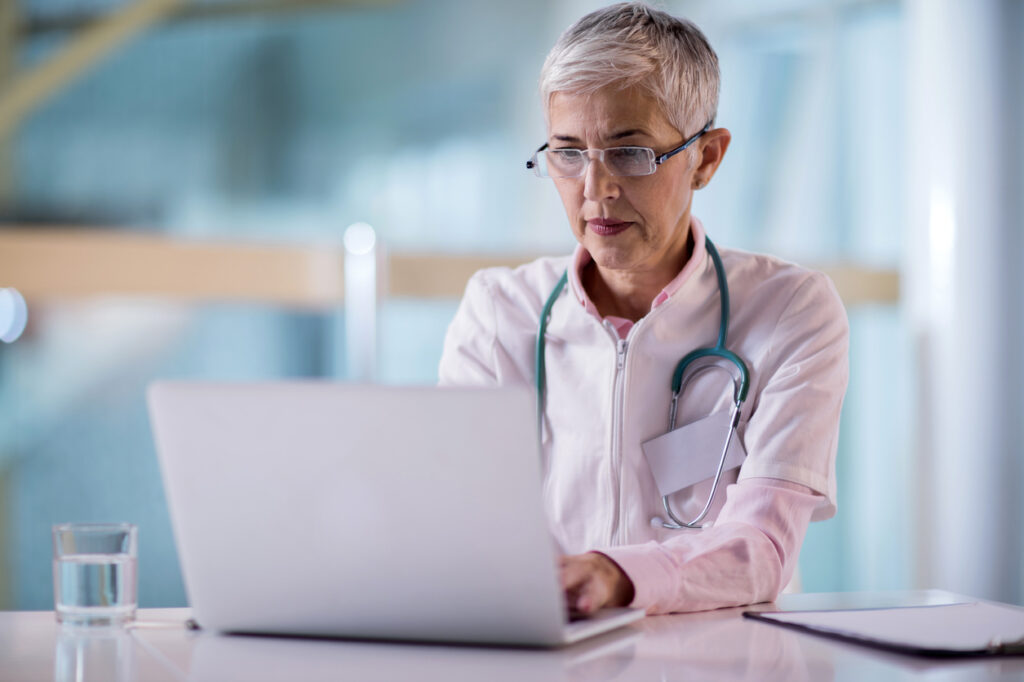Never before have UK and international workplaces experienced such a rapid influx of new services for employees. Real-time wellbeing technology represents a booming business. But can virtual GPs and fitness apps actually deliver on promises to help make employees healthier and happier? And are there hard facts to support this?
Employer provision of health and wellbeing apps rose to 48% last year, up from 21% in 2016, and access to virtual GP services has gone up from 16% to 27% over the same timeframe – and after only appearing on the market around four years ago – according to the findings of Aon’s 2018 Benefits and Trends Survey.
According to Charles Alberts, Head of Health Management at Aon, this growth is indicative of the responsiveness of the employee benefits industry to the NHS position: for example, in terms of funding pressures and difficulties in recruiting GPs.
Growth is also undoubtedly driven by the fact that a number of providers now include virtual GPs and wellbeing apps either with or alongside other products.
Access vs usage
The fact that a large number of employees now have access to apps gives employers the potential to improve wellbeing. But it seems there is much scope for improvement when it comes to actual usage.
Despite nearly half of those companies that responded to Aon’s Benefits & Trends survey stating that they provide apps, only 3% use push notifications to help educate employees around health and wellness.
A push notification is basically a pop-up message. It’s a way for an app to send the user a message, generally a ‘call to action’ style message, without the user actually opening the app. They’re commonly used in fitness apps to prompt the user to, say, up their steps for the day to help reach a goal.
Virtual GPs: what’s in it for employees?
First and foremost, employees get fast access to primary care services via their smartphone: 24/7 consultations at a time and place to suit. Prescriptions can be delivered to the nearest pharmacy, follow-up consultations can be booked – face to face if deemed necessary – and any referrals to specialists can be handled.
Mark Scanlon, Chief Executive of Personal Group, also suggests that virtual GPs help ensure employees don’t put off seeing a doctor and end up working whilst under the weather, which has obvious impacts for both the individual and workplace productivity.
According to a recent survey of over 2000 UK employees by the provider, over a third (38.8%) of UK employees admitted they have delayed seeing a doctor, only to discover that they needed treatment.
In short, virtual GPs services offer a full primary care service in your pocket. Employees no longer have to wait days or weeks for an appointment. The consultation itself is often longer than individuals would get with their overloaded high-street GP. And, what’s more, there’s no need to take a half-day off sick or use holiday entitlement to see the doctor.
What’s in it for employers?
It’s easy to see why employees would like virtual GP services, but what do employers get out of it? Is any meaningful management information (MI) possible? And if so, can it be practically used to help tailor wellbeing interventions?
In many ways the advantages for employers are the same as those for employees. Less time off for appointments and speedier access to care bring obvious benefits to the workplace in terms of reduced absence and presenteeism.
In the opinion of Steve Casey, Marketing Director at Square Health, a provider of health tech solutions, the early intervention benefits are also key, in terms of identifying any further investigations, tests or treatment at an early stage to help limit duration of absence.
The MI day will come
The underlying message from experts in the industry is that the potential for MI is there but not yet realised.
Over time, however, and with enough aggregated, anonymised data it should be possible to inform wellbeing strategy, particularly if it is combined with other information such as PMI and group income protection claims data.
Shaun Subel, Strategy Director at VitalityHealth, believes that the key business imperative for investing in such solutions can be found in data and MI. For example, by equipping the GP to both treat immediate conditions and also provide proactive and preventative support around lifestyle health management.
How to compare virtual GP providers?
-
Consultation duration: there are many differences here across services, and even ‘unlimited time’ has a limit – in practice around 20 minutes maximum.
-
Availability of appointments: some are 24/7, others 9 – 5.
-
Worldwide access: if travelling, can employees access the service? In theory, because it’s tech based, it should be available everywhere. But in practice, some only offer access to face-to-face consultations and treatment in the UK.
-
Prescription charges: Some services charge for prescriptions, others don’t.
-
Choice of GP: the ability to select a GP is included with some services, not all.
-
Health tracking: some services include the ability for users to store all their health and fitness information in the one place, creating a valuable wellbeing tool.
Are NHS GPs going digital?
Finally, is it worth noting that the NHS started piloting its own virtual GP service – GP at Hand – just a few months back.
Powered by artificial intelligence medical specialist Babylon, the NHS began a 6-month free trial of GP at Hand in a handful of London boroughs back in January this year. Individuals have to de-register from their current GP in order to sign up.
Sign-ups are reportedly good so far, but the pilot has attracted controversy from medical professional sector with fears of unintended consequences around healthcare inequalities suggested.
The NHS has recognised the power and potential of digital health solutions too.
While anyone can sign up to the service, the website states it might not be suitable for “complex mental health problems or complex physical, psychological or social needs”. Those who are pregnant, older or frail, have dementia or learning difficulties may also find it unsuitable.
It provides swift 24/7 access, as per employer provided virtual GPs, but may not provide as comprehensive a service. Users communicate with a kind of Chatbot triage first, then access a virtual GP if appropriate. Also NHS prescriptions are obviously charged as normal.
Whether the services is further rolled out following the pilot remains to be seen. But what is clear is that the NHS has recognised the power and potential of digital health solutions too.






